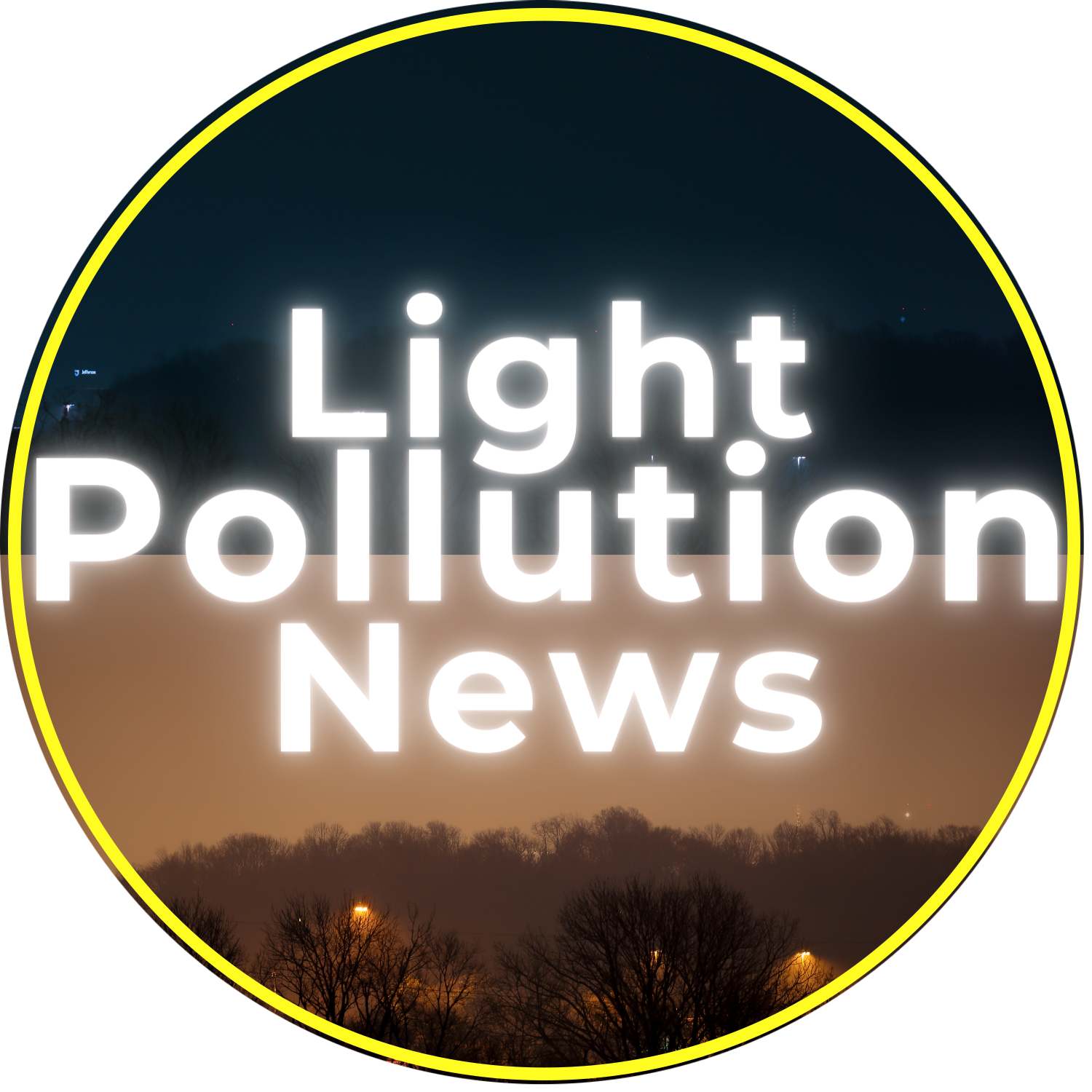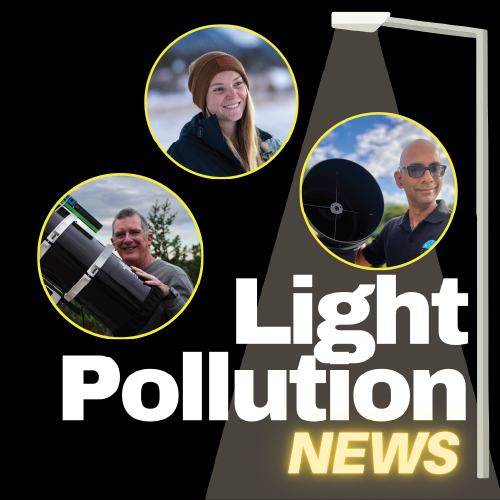
Join the conversation at r/lightpollutionnews or Follow us @Light.Pollution.News or LightPollutionNews. Join our mailing list.

April 2024: Sonification, Light Pollution News.
Host:
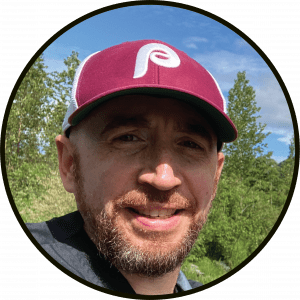
Guests:
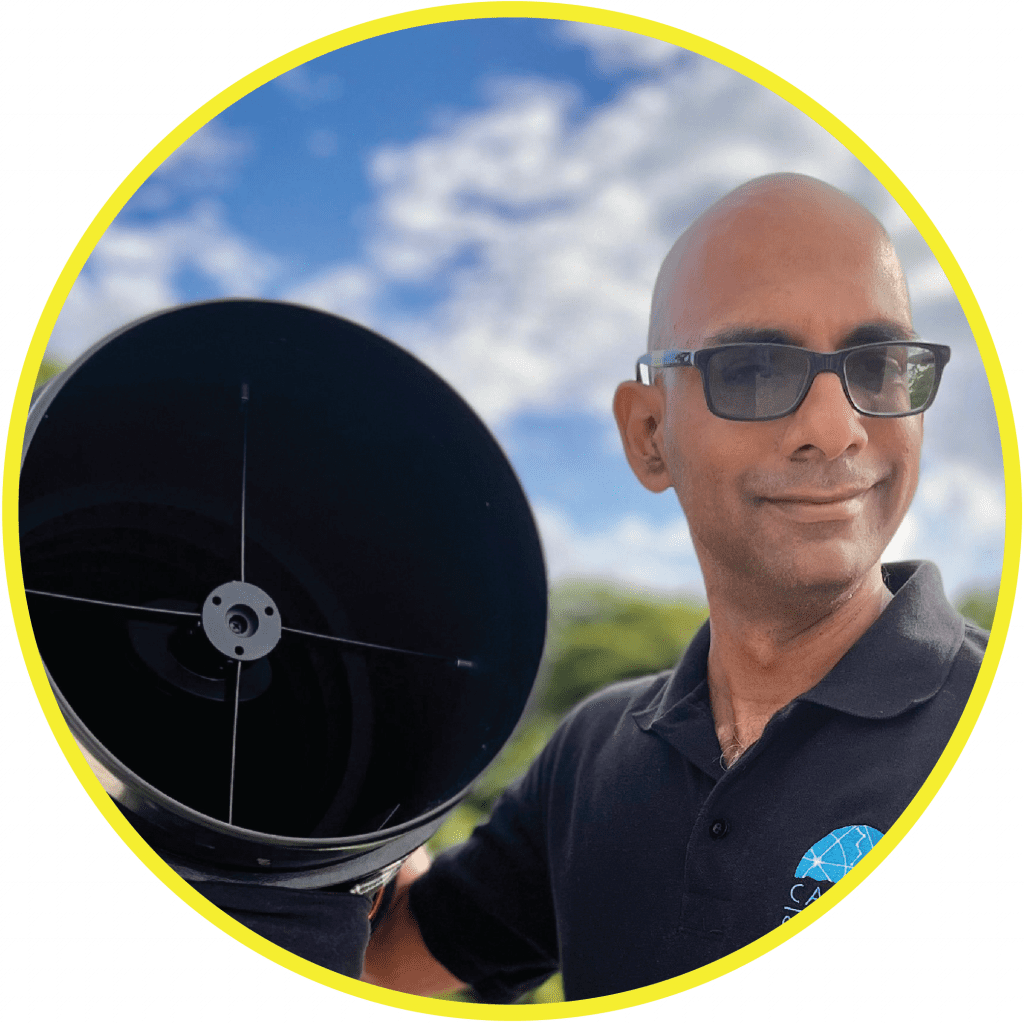
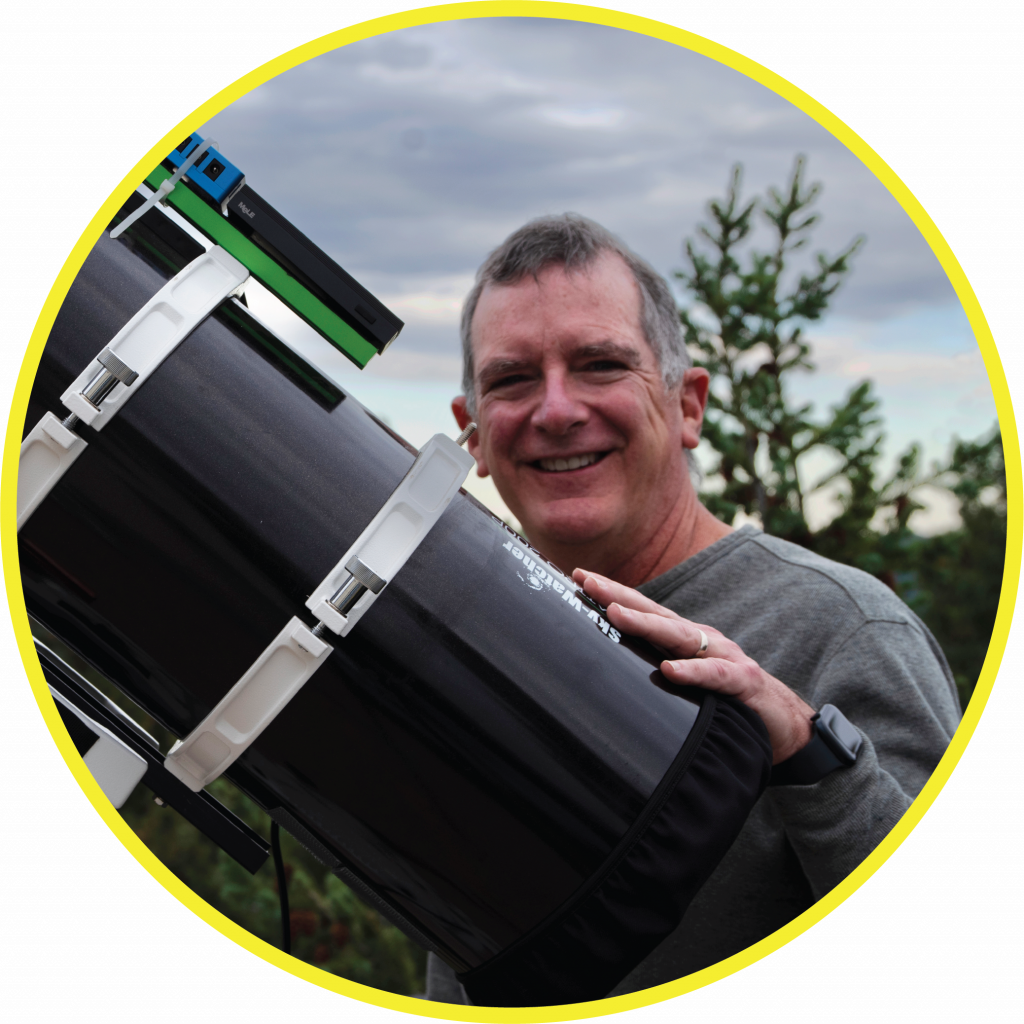
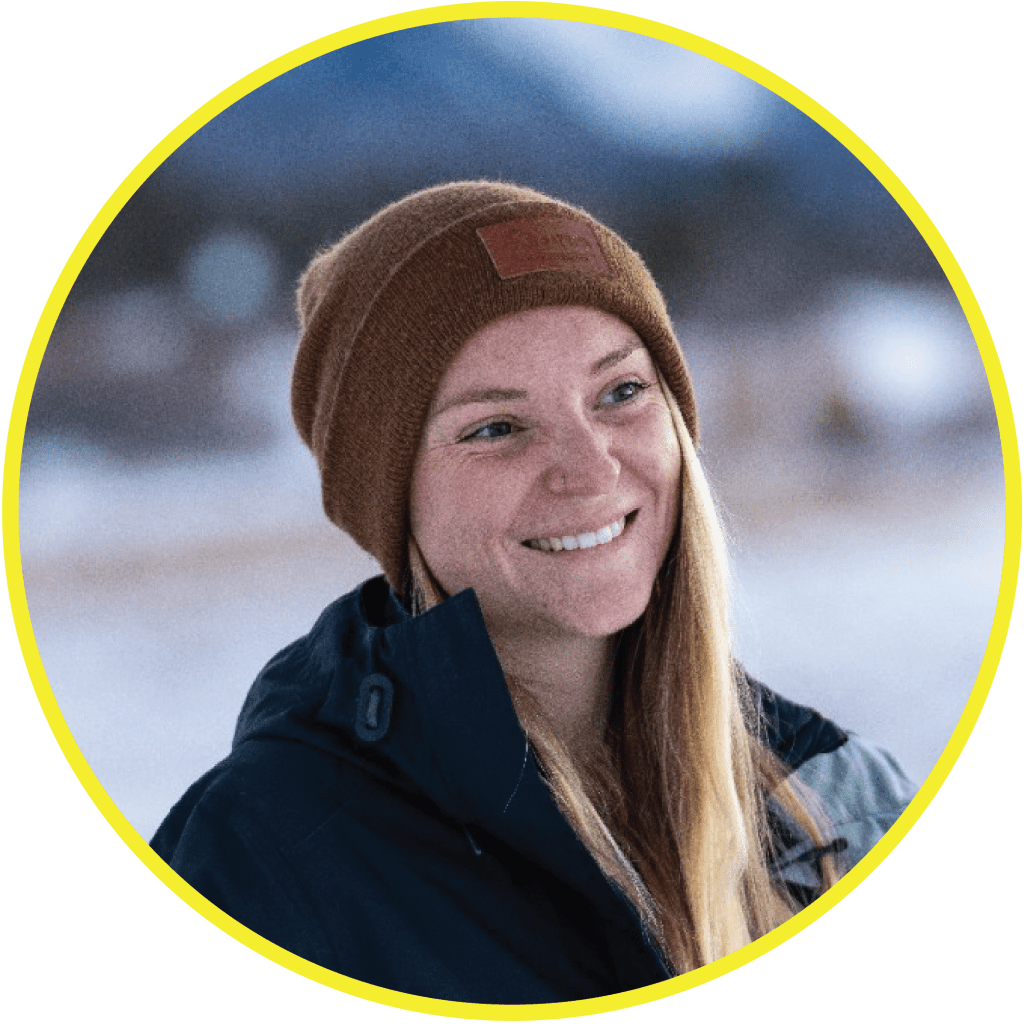
Isa Mohammed
Isa Mohammed is an amateur astronomer, engineer and entrepreneur residing in Trinidad and Tobago. He is the current President of the Caribbean Institute of Astronomy, the Trinidad and Tobago National Coordinator for Astronomers Without Borders, an advisory board member of the North American Regional Office for Astronomy Development, and an ACEAP Astro-Ambassador. Isa is a Director and Sales Manager at Eniath’s Printing Company Limited. Apart from his work in science outreach and education, he is also an avid astrophotographer. When he’s not tending to his business or doing outreach, he can usually be found behind a telescope, fishing, or playing board games with his wife and three sons.
Frank Turina
Frank Turina, an astrophotographer, night sky advocate, and environmental educator with more than 15 years of working with the United States National Park Service Night Skies Program. You can learn more about his examinations of the ecological and cultural effects of light pollution from his website, at the Night Sky Resource Center.
Bettymaya Foott
Bettymaya Foott works for the Dark Sky International as director of engagement. Preserving dark skies is her life goal, and she finds that astro-landscape photography is the most poignant way to express a love for the night and to educate people about the impacts of light pollution.
Article List:
- Blue lights for Benny: Delco lights up to honor 2-year-old who unexpectedly died, Leland Pinder and Katherine Scott, 6ABC.
- These 6 Colored Porch Lights Mean Something in Connecticut, i95.
- Sea of Lights’ rally against the rise of right-wing extremism, DW News.
- Residents concerned with broken street lights after boy was killed crossing street in north Houston, KHOU11.
- Baton Rouge streetlight upgrades may take time to brighten entire city, WAFB9.
- Some Entergy customers could see increase in bills because of new bulbs used in street lights, WAFB9.
- Atlanta City Council to consider adding $3.9 million to next phase of street light, safety initiative, 11Alive.
- LED Color Temperature Selection Process, the City of Grand Rapids.
- $10M project to convert all Grand Rapids streetlights to LED nearly complete, Michael Kransz, MLive.
- Grand Rapids LED streetlight switch nearing the end, issues light up, Matt Witkos, Fox17.
- Board slams Palo Alto’s plan for bird-safe buildings, Gennady Sheyner, Palo Alto Online.
- Architectural Review Board Staff Report, City of Palo Alto.
- Focus on Belcoo: Community shines in gateway to the West, Victoria Johnston, Impartial Reporter.
- Councillors take dim view of Dark Skies impact on development, William Smith, Impartial Reporter.
- Small, uniquely historic town of Antelope seeks Dark Sky status to brighten future; 4 streetlights’ removal sparks debate, Tyson Beauchemin, KTVZ.
- Lake Placid village board OKs ‘Dark Sky’ committee, Oliver Reil, Adirondack Daily Enterprise.
- Design Edition: Oklahoma City’s Dream of a Sooner Supertall Skyscraper, Kriston Capps, Bloomberg.
- A night in England’s darkest village, Helen Pickles, The Telegraph.
- Visitor outcomes from dark sky tourism: a case study of the Jasper Dark Sky Festival, Journal of Ecotourism.
- The Story from Here, CBC.
- How to Enjoy Some of the Darkest Skies on Earth From a Hot Tub, Nico Hines, The Daily Beast.
- Protecting Dark Sky Country, Caia Hagel and Tim Georgeson, Noema.
- Associations of light exposure patterns with sleep among Dutch children: The ABCD cohort study, Journal of Sleep Research.
- Flaco, the escaped Central Park Zoo owl, dies, Stephanie Guerilus and Meredith Deliso, ABC News.
- UWS State Senator Renames Bird-Safety Bill FLACO Act: ‘Feathered Lives Also Count’, Gus Saltonstall, West Side Rag.
- Senate Bill S7098A, The New York State Senate.
- Senate Bill S7663, The New York State Senate.
- Effects of artificial light and latitude on the dawn foraging activity of Great Tits (Parus major) during winter in northern Europe, Ornis Norvegica.
- Light pooling, Daire Carroll & Jessica Harvey-Carroll, Oceanographic.
- Ocean LED.
- Foraging at night under artificial light: impacts on senescence and lifetime reproductive success for a diurnal insect, Animal Behavior.
- Blue Light Attracts More Spodoptera frugiperda Moths and Promotes Their Flight Speed, Insects.
- Artificial light changes visual perception by pollinators in a hawkmoth-plant interaction system, Urban Ecosystems.
- Wild mice in an urbanized world: Effects of light at night under natural and laboratory conditions in the single-striped grass mouse (Lemniscomys rosalia), Chronobiology International.
- The effect of artificial light at night on a nocturnal primate, Folia Primatologica.
- EVIE installs ports in street lamps to charge 2 electric vehicles at once while lighting up roads, Design Boom.
- MEANS AND WATERWAYS: LIGHTING A FERRY TERMINAL, Randall Whitehead, Furniture, Lighting & Décor.
- The world’s largest ‘dark sky sanctuary’ is now in this US state, Megan Ziegler, Fox10.
- Gantrisch becomes first International Dark Sky Park in Switzerland, Drew Reagan, Dark Sky International.
- Announcing the newly created Blackwater Falls State Park Foundation, Parsons Advocate.
- A global atlas of artificial light at night under the sea, Elementa: Science of the Anthropocene.
You three are in luck this month, as we have some really interesting articles that popped up in my feeds, although, like I said, it will be challenging material at times. I can’t control the news.
We’re going to start off the show asking what exactly is the meaning of light. Leave it to us humans who are always trying to, either find or apply meaning to which there seemingly is none apparent!
First up, here’s a local news story from my area, Benny Petransky, a two year old, passed when he contracted a viral infection.
In an act of solidarity to console the family, folks all across Delaware County switched their porch lights to blue.
The nighttime aerial visual as seen in the article is stunning.
Then we have this click baity post from i95, a Connecticut radio station. They draw meaning out of 6 different colored porch lights.
Included in this are some assumptions, I’m not sure how founded these are. For instance, Pink they (or maybe their Chat GPT) assert that this is in support of Breast Cancer Awareness, Purple to support awareness of domestic violence… and Green might indicate St. Patrick’s Day.
They contend that yellow has no meaning, as it’s simply about keeping bugs away, and when I shine a red porch light, it might be to maintain night vision.
Or, maybe it’s to showcase my support of firefighters and brothels.
Sometimes click bait is fun.
Then we have this piece from Munich, Germany. People gathered in the thousands to wave lights of all types around to protest hate speech, racism, and anti-Semitism. Again, the visual is stunning. For you at home, it looks like a sea of stars on the ground.
The protest is to unify public opinion and politics against the right wing AFD party in Germany after party representatives supposedly met with Neo-Nazis.
Ok, it’s time to venture into the infamous street lighting category. Here we hit some interesting news.
First, and we’ve seen a number of articles like these come through in the past. They’re tragic stories.
In Houston ,a boy jaywalked on a busy four lane road at night that was abutted by a line of unlit street lights. The boy was fatally run down.
Baton Rouge, Louisiana, and I’m sorry Isa, as this show’s a bit US centric today. I definitely did not plan that.
The plan to “brighten the entire city” is surely not anything unique to Baton Rouge. Atlanta announced their Orwellian named plan entitled “Light Up the Night.”
What is interesting is that Baton Rouge residents will be unwittingly forking the bill.
Due to the LED switch involved in Baton Rouge’s ‘Entire City Brightening’ project, residents should expect a “small increase” in their bills. In the WAFB9 article, the “cost of operating and maintaining street lights” is apparently shared by Entergy customers.
The Atlanta story is curious because of the amount of money they will be spending to add phase 3 of their lighting project – that’s $3.9M. It’s part of a $70M crime reduction plan.
The basis for cities like Atlanta, Baton Rouge, Memphis, Louisville, Newark, and here in Philadelphia, all appear to derive from two studies. I preface with appear to derive, because I have yet to pin anyone down on the “evidence” constantly “cited” in their press releases.
They appear to derive from a 2018 Detroit study on street lighting impacts, and the infamous weaponization of lighting study by Andrew Chalfin and the team over at the Chicago Crime Lab.
In Grand Rapids, Michigan, some folks appear to not be huge fans of the lighting switch. The city spent $10M to switch over to LEDs street lights. The change in brightness combined with the white colors appear to be off putting, with one resident comparing it to the sun.
When asked, Grand Rapids City Engineer, Tim Berkman, dodged the brightness question and instead chimed back that they’re the color of the moonlight, otherwise known as 4000K. Grand Rapids cited 314 other cities with a population exceeding 100,000 which utilize 4000K temperature lighting.
Now get this, here’s the kicker. Grand Rapids actually attempted to survey residents on their preferred color temperature via a postcard survey, but for whatever reason apparently didn’t receive much response. In a post card campaign, Grand Rapids surveyed 494 households and received 14 responses.
In 2020, Grand Rapids had an estimated 77,000 households. In doing some modest math, that means that the city attempted to postcard survey 2/3 of 1% of the households in Grand Rapids and received input that amounted to a fraction of a fraction of a percent.
It appears that they had a separate survey for community members to take, which was open to the entire population, and only 35 individuals took it, making that another fraction of a fraction of the total participation rate.
Despite the paltry responses, those who did provide feedback opted for 3000K over 4000K. Still, the city decided against using 3000K because it apparently is more cost effective.
The case for the 4000K was backed by what Grand Rapids termed as a lack of studies that prove the health benefits of 3000K over 4000K lighting temperatures. It should be noted, the reasoning for this came from the US Govt’s Energy.gov website. I, unfortunately, could not pin down the direct sources they cited as the study references were stuck in a graphic.
In Palo Alto, California, the community’s architectural review board expressed displeasure with a bird friendly proposal. Chairman Peter Baltay and Vice Chair Kendra Rosenberg made a case against adopting the ordinance, which includes a dark sky provision.
Expressed among their complaints was displeasure with the proposed uniform bird safe window rule for new construction; displeasure with the ordinance’s attempt to reduce light trespass and glare, and displeasure with applying common sense practices like shielding and proper aiming.
Rosenberg further argues “Once you start going inside someone’s building and affecting how they’re operating and how they’re doing things, you’re crossing a pretty notable boundary.”
Now these next two make more sense to me. And I’m glad you’re here with us today, Bettymaya because I think this is one you might be able to speak to better than any of us.
First up, In Belcoo, Northern Ireland, town Councillors have expressed concerns that progressing toward a Dark Sky designation may be detrimental to the community.
Specifically, cited in the piece was the town’s plan to light up Cottage Green. The Cottage Green is a park-commons area in the community. I wasn’t able to dig up too much in regards to the plan.
However, I was able to dig up some motivation for the brightening of the park, a Mr. Bernard Donelly stated in an unrelated article “Well, I’ll tell you what’s bad about [Belcoo] – we have no lights around [the Cottage Green], and people can’t walk round it at night.”
The other piece comes from the tiny town of Antelope, Oregon, population 37. Even there, residents expressed dismay when the mayor removed the only four street lights in the town in order to install new starry sky compliant street lighting (that as of this article had yet to be turned on). Apparently, the town has been without street lights for months and some of the residents are fearful for their lives and property.
The thread that ties these stories together is that Antelope is trying to obtain a Dark Sky designation.
Did you guys hear about this? In sleepy Oklahoma City, a developer who aggrandizes his ego to be a bit bigger and more inspirational than it appears to be in reality has proposed building a 1907 foot tower. The first of its kind in the Big Friendly.
The current tallest building is the Devon Tower at 844 feet in height. That’s over 1000 more feet in height! But the size isn’t what plops this into the policy segment.
No, instead it’s this quote from Rob Budetti, the managing partner for the architectural firm involved in the project.
“This beacon of light will be seen for 100 miles, maybe more.”
And make no mistake, this whole complex, which has a lower complex that in photos appears on par with a Vegas style brightness factor, will stand out like a generic, glowing glass middle finger in the distance (and that’s not really a hyperbole, it kinda looks like a middle finger with the glowing piece being the nail).
The structure, which in mockups appears with endless LED boards wrapped around its lower end, and countless spotlights aimed upward, also has a gaudy name tag across the middle. Finally, the edges of each glass building end will be lit up.
To put my spin on it, It’s astoundingly void of inspiration. It looks like something from the hell scape of Back-To-the-Future 2, where Marty lands in the alternate present run by Biff Tannen.
Rounding out our policy news, Lake Placid, New York, sitting in the beautiful Adirondacks, voted unanimously to investigate what it will take to become a Dark Sky community. Mayor Art Devlin is essentially dipping his toes into the community’s response and desire for this designation.
If Placid were to go down that path, they would need to work with New York state on obtaining cooperation for new lighting rules and upgrades for the very brightly lit Olympic Regional Development Authority sites.
We have a big ecology segment tonight, which we’ll get to in a bit.
I came across this story and found it very intriguing.
Helen Pickles, a writer for the Telegraph, paints the International Dark Sky Reserve, North York Moors in England, as a calming paradise of balance and tranquility.
Pickles encounters something that maybe we need here, namely a Dark Skies Officer. In this case, his name was Mike Hawtin.
In the tiny village of Hawnby, where Pickles is staying, population 193….Pickles takes special note of how the purposeful exterior lighting guides the eye. Careful not to afflict one’s eyes with overwhelming amounts of glare.
The second thing Pickles notices is the ability of non-vision senses to rise to the occasion. In her case, operating every bit as effectively as Pickles’ vision.
Pickles’ hearing elevated to recognize river water passing in the distance, it caught hooting owls in the distance, and the clamor of pheasants and more.
One resident, Paul Smith, even added that the new designation, which led the community to develop a more purposeful relationship with night, has seen a surge in the owl population. Smith and his daughter even started looking up at the sky with a telescope, something they both had no interest in previously!
A study out of the Journal of Ecotourism looked at visitor outcomes for Jasper’s Dark Sky Festival. Among other things, the study found that 42% of attendees planned to adjust their behavior to protect dark skies.
Staying in astrotourism, let’s whet your appetite for something grand. How about a trip to the Isle of Skye? While it’s not a dark sky designated area, it has leaned into its low Bortle rating. How about this for a dark sky getaway – if you stay at the Duisdale House Hotel, you can take in the stars in the comfort of a hot tub! Hot chocolate spiked with whiskey and a three course meal included!
This is all part of the area’s marketing lure to energize the dormant wintertime economy.
The CBC’s The Story from Here ran an interesting piece on how light pollution is overtaking Whitehorse. Whitehorse, a city in Canada’s Northwest Territories, as many of you may know, is a premier winter tourist destination for all things from dog sledding to gazing up at the northern lights.
In that audio piece, producer Andrew Hines utilized an audio demonstration of light pollution. Hines uses individually struck piano notes to simulate the stars under light pollution, versus a well strung compilation of chords and random key splatters to indicate a full milky way of stars.
As we roll into our ecology segment tonight, it’s important to keep this tidbit in mind. This comes from an article in NOEMA Magazine.
“Humans are not immune to the effects of [sky] brightening. We have become anxious, insomniac, blinded by screens. In our plights to be productive and stay relevant in a sleepless economy, we routinely overdose on artificial light and deny ourselves darkness.
Excessive wakefulness in humans is linked to cancers, cardiovascular disease, hormone dysfunction, obesity, depression, and diabetes, among a growing number of other physical and mental disorders.”
This leads us to one health study to note this month, from the Journal of Sleep Research, a study on 247 Dutch children aged 11-13 years found that light intensity, timing of light exposure, and the duration of such exposure all leads to prolonging the onset of sleep and/or a reduction in sleep duration. Essentially, this study reinforces the circadian need found in other recent studies that suggest that bright daytime environments followed by dark nighttime environments are optimal for sleep health.
Kicking off our big ecology segment tonight! Sadly, as I’m sure many of you have heard, Flaco, the Eurasian eagle-owl that was let loose by vandals from the Central Park Zoo in February of 2023, has passed.
Since that time, Flaco lived the high life, capturing the imagination of residents and the media. Le Monde did a feature on Flaco, hoping for Disney to gain some inspiration for a future production from the owl. A late night tv host, Seth Meyers, even did a segment on Flaco. Flaco became a sight sought after by birders and visitors alike.
That was until a few weeks ago when the owl had an unfortunate run in with a building on West 89th Street on the night of February 23rd. Flaco represents just one of the astounding “250,000 birds estimated to die each year in New York City.”
Well, New York State Senator, Brad Hoylman-Sigal announced on February 27th that the proposed Bird Safe Buildings Act in New York State would be renamed the “Feathered Lives Also Count” Act, otherwise known as the FLACO Act.
Starry sky advocates should take note, there is a companion piece to this legislation, which is NOT the same bill, the Dark Skies Protection Act. Therefore, it will not have a cute, feathery champion to help sherpa it along through the New York legislature.
I will add, if you are a New York State resident, you can go to the bills (linked on this show’s webpage) and voice a vote of support for the bill right from the NY Senate’s website.
Staying in the avian world, a study from Ornis Norvegica found that resident birds, that is, birds that do not migrate – in the case of the study, the Great Tit, increased their winter foraging activity when in the presence of artificial light.
Researchers set up artificially lit feeding stations in a forested area and recorded daily activity in December and February at various locations up to 60 degrees north latitude. The northern most locations saw foraging activity begin several hours prior to sunrise while the lower latitude locations saw foraging activity start only minutes before sunrise.
Have you guys ever heard of light pooling? We see this whenever we go down to Florida and watch people fish off the pier in the night. In that case, it’s used to lure fish.
Well, the marine tourism industry has come up with an approach to “guarantee” experiences such as shark sightings, to paying customers. It goes like this, shine bright lights deep into the water, which attracts plankton, which attracts fish, which then attracts whale sharks and manta rays.
Apparently, according to the article in Oceanographic, the approach is so successful that they now offer “multiple light pooling excursions” all week long, at multiple times during the night.
Before I open this one up, there’s even a consumer side company that exploits our love of light at night, and packages it into a ‘bling’ design effect for boats and docks. The UK based, Ocean LED specializes in lighting up everything underwater in fancy colorful arrangements – in a way that would be closest to car ground effects, whereby the sea will glow a red, green, blue, white, or other colors of that user’s preferences.
I’d like to note also that Ocean LED prides itself on being “ECO”-centric, which looks to line up more to typical greenwashing we see with many of these LED companies – discussing how their product is made from renewable butterflies and bamboo trees….I kid, but in actuality they focus solely on their carbon footprint and willfully ignore ecological impacts.
From an article in Animal Behavior, it appears that artificial light at night increased both activities and lifespans of the wasp, Venturia canescents. Specifically, night activities increased under the presence of a simulated artificial light at night sky glow, these included feeding and egg laying. These wasps are diurnal creatures, meaning that they live in a similar day/night framework to critters like ourselves.
Light traps again make an appearance, this time looking at the crop pest, the fall armyworm. These moths, native to the Americas, have begun conquering parts of Africa and Asia, and even Australia. What makes them such effective insects is their ability to migrate over long distances.
In an article in Insects, it is found that this species of moths is highly sensitive to blue light, and therefore recommend instituting blue light traps as an alternative to spraying pesticides. Specifically, blue light appears to energize the moths to fly much faster under blue light than in a natural night environment. Also tested in the study were the colors of green and ultraviolet, which yielded less activity than blue.
Onto plants – an interesting study out of Urban Ecology that looked at how light affects how moths perceive plants. Specifically, the hawkmoth’s assessment of nighttime flower and leaf color was found to be accurate in most but not in all conditions under either a 5000K LEDs, Mercury Vapor lighting, or High Pressure Sodium lighting.
And finally in the world of mammals, artificial light at night appears to have slowed the activity of single striped grass mice.
Artificial light at night also appears to affect the Indonesian primate, the spectral tarsiers. In a study in Folia Primatologica, the tarsiers slept at lower heights, implemented fewer vocalizations and ended up foraging longer into the night.
To finish the show up, I have a couple of quick but interesting articles.
First up, we’ve talked about smart cities on this show plenty of times. Here’s a clever concept that while baked in design theory at the moment, has some practical thought behind it.
A company called Alloy Design Studio developed a conceptual answer to urban car charging, simply put the plug into the street light pole.
Sticking with design, in Seattle, Randall Whitehead, writing for Furniture, Lighting & Décor, took special notice of a purposely lit Ferry Terminal. The company ‘Dark Light Design’ created a modern ferry terminal utilizing indirect soft lighting, thereby eliminating glare from both the interior and exterior of the facility. Or, as the author puts it, “no glare, Just Glow.”
In addition, the lighting both fits federal standards for “security” lighting and comes in 16% better in energy use than was allotted by code. And here’s the kicker, the lighting designers even focused on reducing light trespass that may enter the marine habitat – helping to curb aquatic light pollution!
For those of you who have never visited Seattle, the city relies on a robust ferry system to reach multiple islands and the western reaches of Washington state.
We’ll wrap up tonight cheering on some of the hard work put in by volunteers who helped create the new Oregon Outback International Dark Sky Sanctuary, a whopping 2.5 million acre area that sits in Southeastern Oregon.
Big round of applause for the folks hard at work in Berne, Switzerland as the 105km Gantrisch Dark Sky Zone became a reality this month!
And I also want to give a big shout out to one of the most beautiful states on the east coast of the US, to the newly formed Blackwater Falls State Park Foundation in Tucker County, West Virginia. The first project on the newly formed board’s list is to obtain an International Dark Sky Park designation. I’ve had many great moments in the Mountain State and wish them the best.
